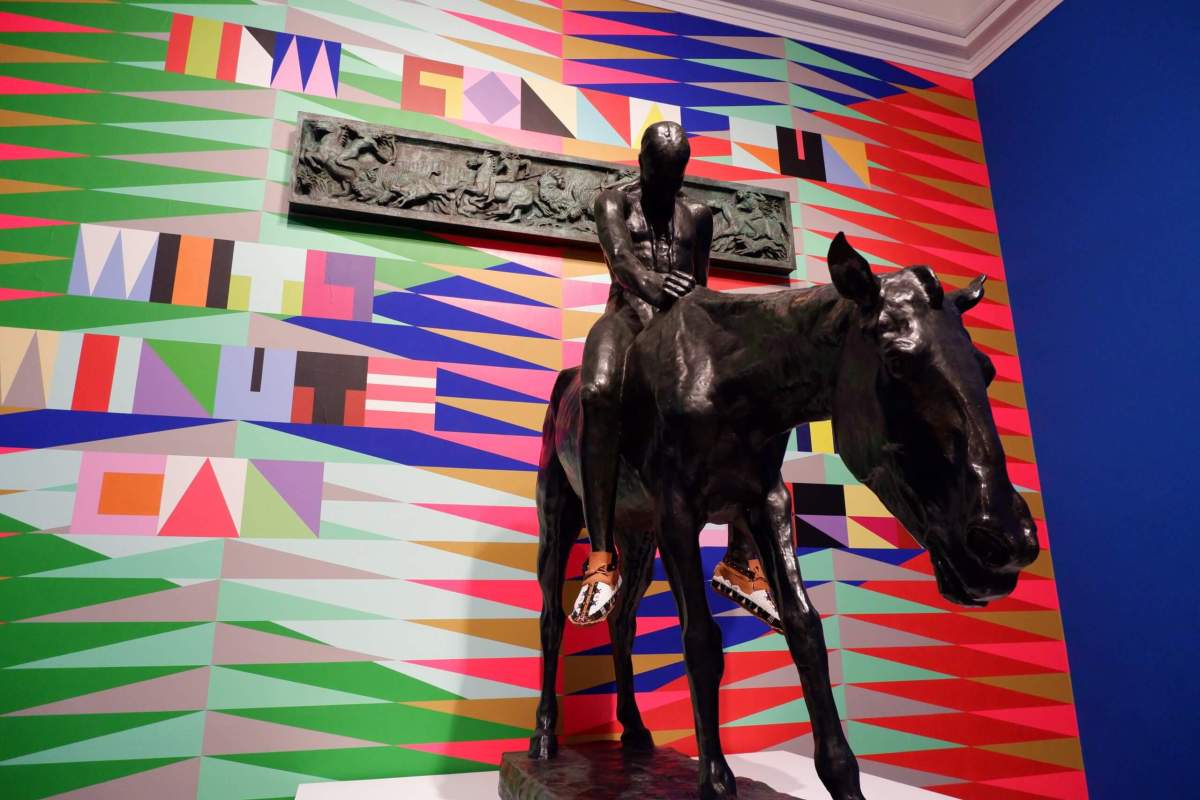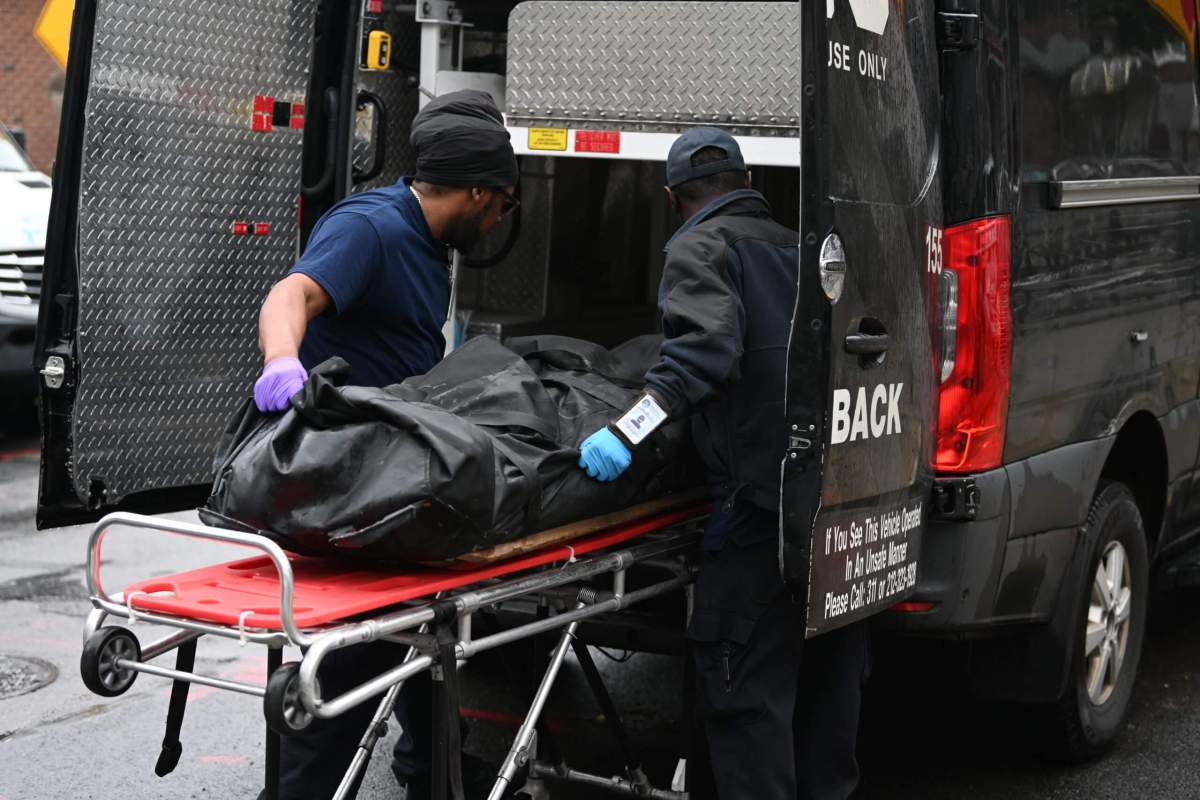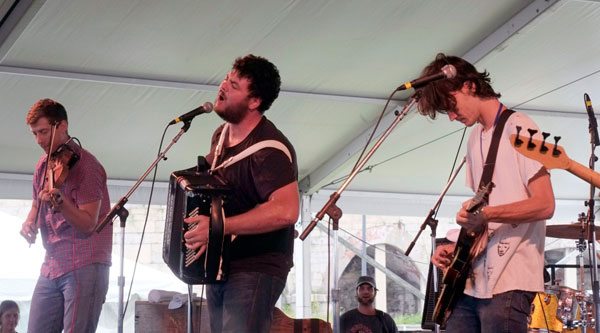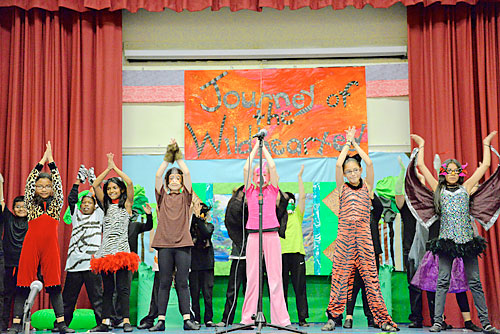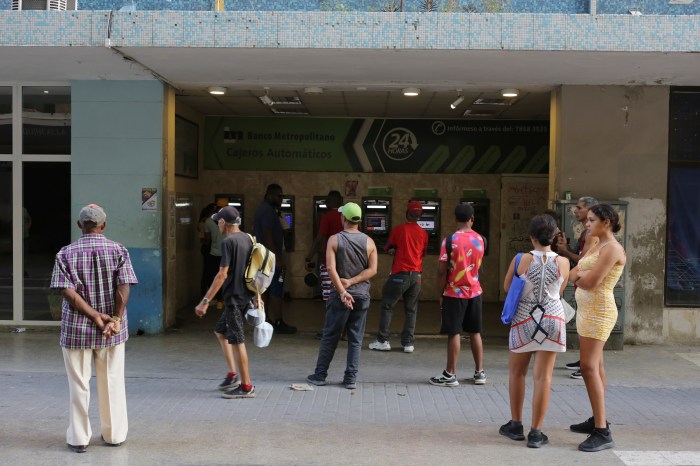He’s giving us a fresh look at old art.
A Native American artist is using centuries-old sculptures and artifacts from the Brooklyn Museum’s collection to weave a new story about indigenous people. “When Fire is Applied to a Stone it Cracks,” on display at the Brooklyn Museum until 2021, juxtaposes stereotypical portrayals of American Indians with colorful new art by artist Jeffrey Gibson to show that Native Americans are a vital, living community, the show’s curator said.
“He’s looking at history and the way history has been told and telling a counter-narrative,” said Eugenia Tsai.
The show opens with a well-known piece from the Museum’s collection: Charles Cary Rumsey’s 1904 sculpture “Dying Indian,” which features a slumped figure on an emaciated horse. Gibson created a pair of moccasins and slipped them onto the bronze figure, which gives the morbid piece a lively pop, and placed it in front of a vibrant mural of modern song lyrics.
Throughout the show, Gibson’s brightly-colored sculptures, weaving, and stained glass contrast with the European art’s focus on death and decline.
“There was this whole trope of the ‘dying Indian’ and this image perpetuated by Europeans and Americans that Indians were a dying race,” said Tsai. “One of the things Jeff is doing is working against that.”
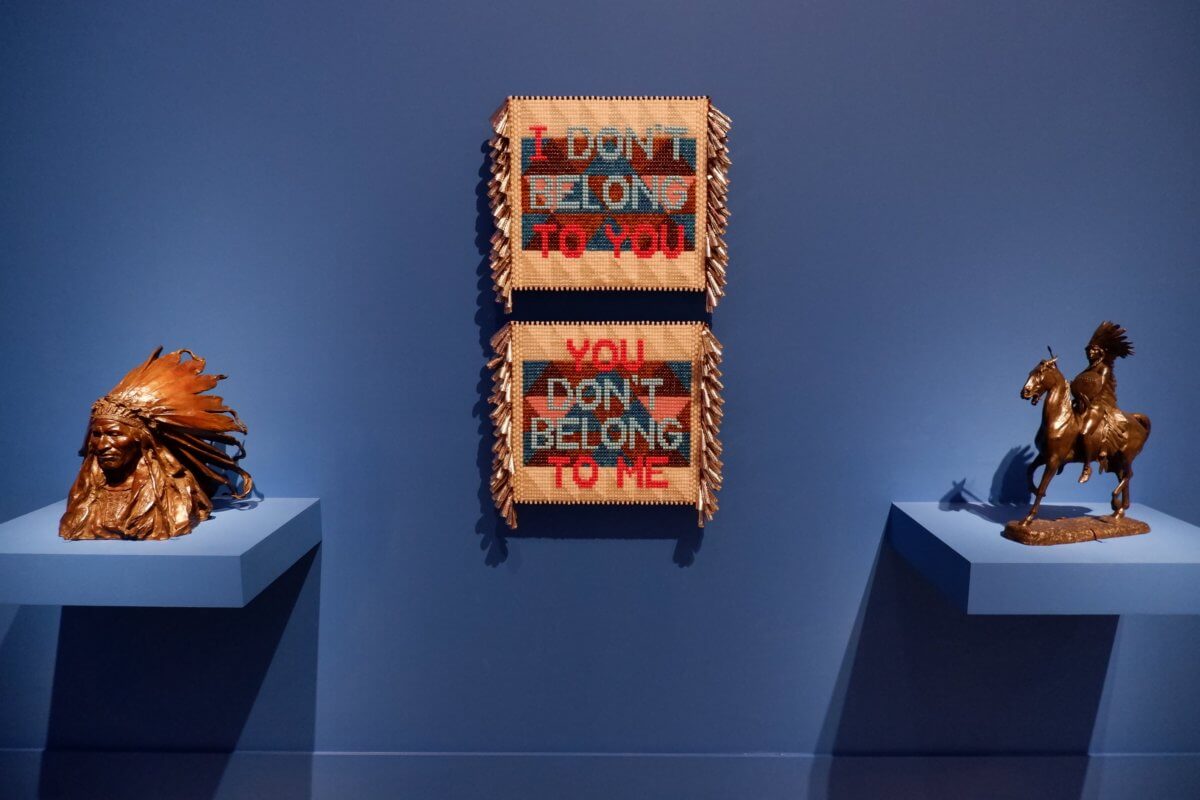
The exhibit also highlights pottery and photographs by Native Americans, demonstrating the wide variety of indigenous art, Tsai explained.
“People seem to have an idea of how Native American art should be, and [Gibson] really wants to show its variety and that it’s always been hybrid, it’s always been contemporary,” she said.
Gibson, who has Choctaw and Cherokee heritage, took the show’s name, “When Fire is Applied to a Stone it Cracks,” from an Irish proverb. The fire represents Native American innovation, while the stone is the static stereotypes created by Europeans, Gibson explained.
“I read ‘fire’ in this quote to describe the innovative making, use of materials, transformative techniques, and the survivalist ethic of Indigenous people,” he wrote.
The show critiques traditional portrayals of Native Americans, but it does not seek to shame or chastise the non-Native works, Tsai clarified. Instead, it showcases the power and life within Native American art and communities, Tsai said.
“Images of joy, images of happiness, images of community and family where subjects weren’t posing for the camera but maybe were caught in their daily lives — that can be a powerful form of resistance,” she said.
“When Fire is Applied to a Stone it Cracks” at the Brooklyn Museum [200 Eastern Pkwy. at Washington Avenue in Prospect Heights, (718) 638–5000, www.brooklynmuseum.org]. On display through Jan of 2021. Wed–Sun; 11 am–6 pm. $16 suggested admission.


